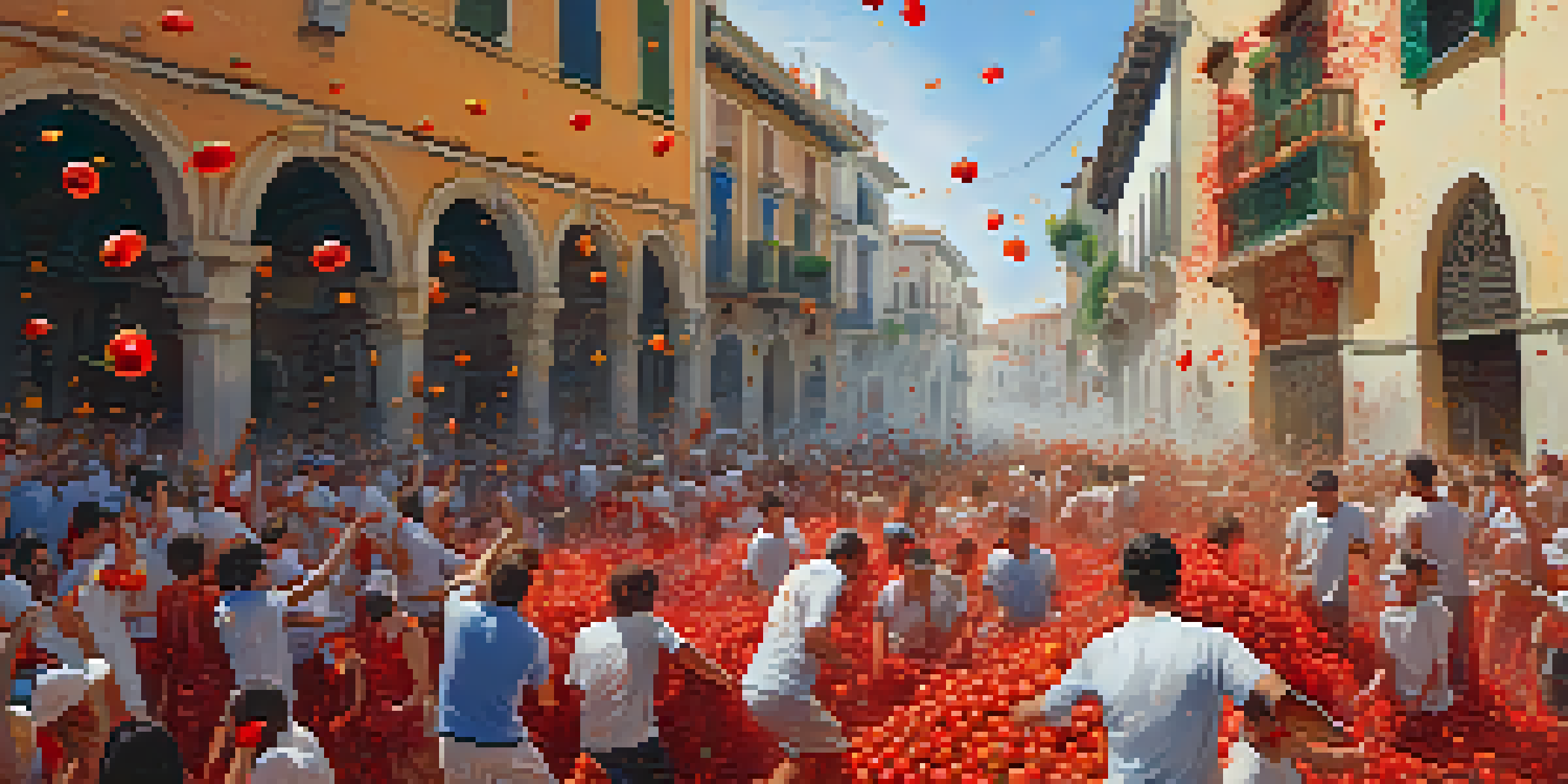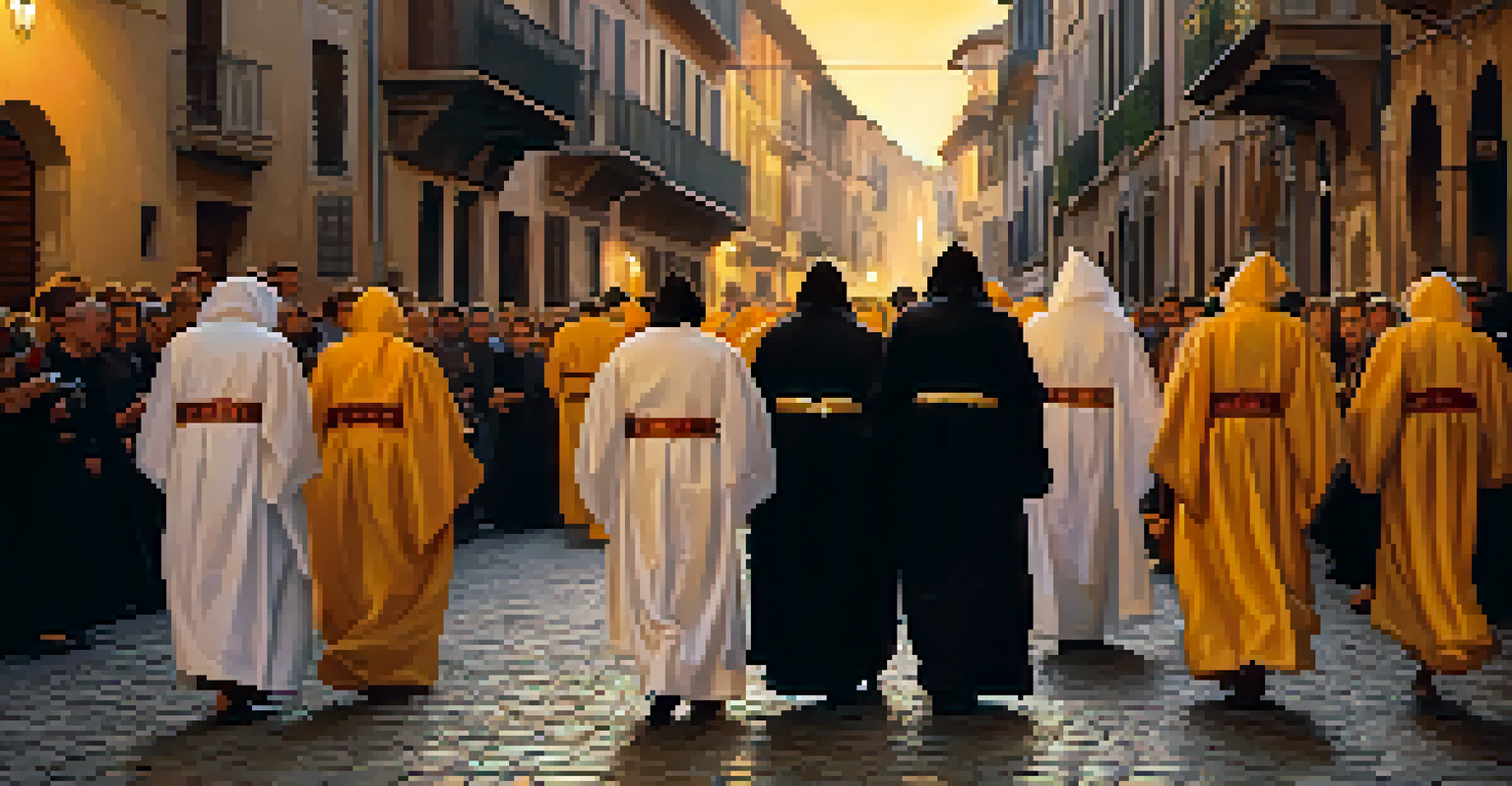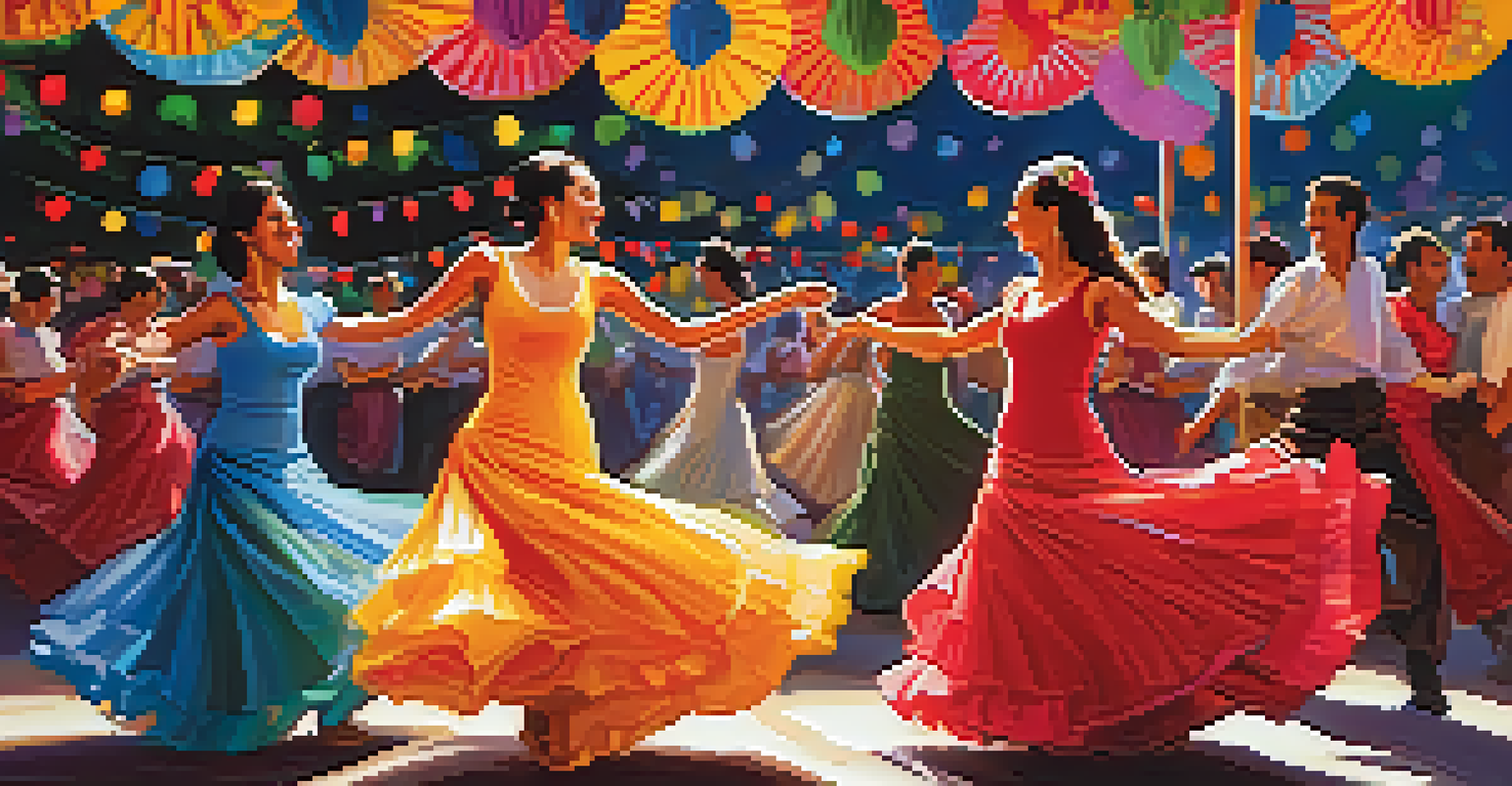Cultural Photography Workshops: Spain's Festivals and Traditions

Understanding Cultural Photography and Its Significance
Cultural photography captures the essence of traditions, rituals, and daily life. It’s not just about taking pictures; it’s about telling stories that reflect the identity of a community. In Spain, where festivals like La Tomatina and Semana Santa abound, cultural photography becomes a vibrant canvas of colors, emotions, and narratives.
Photography is the story I fail to put into words.
Through photography workshops, participants can learn to frame these unique moments that define Spanish culture. They’ll explore techniques that emphasize storytelling, allowing them to capture not just images but the feelings and atmosphere of the celebrations. This approach transforms a simple snapshot into a compelling visual narrative.
Ultimately, cultural photography workshops enable photographers to appreciate and document cultural diversity. By engaging with local traditions, they become ambassadors who share the beauty of Spain’s rich heritage with the world, fostering a deeper understanding and appreciation of its festivals.
The Allure of Spain’s Traditional Festivals
Spain is famous for its lively festivals, each offering a unique glimpse into its rich history and culture. From the fiery passion of Flamenco to the vibrant displays of La Feria de Abril in Seville, these events provide endless opportunities for photographers. Each festival embodies distinct customs and traditions that tell the story of the region.

For instance, the Running of the Bulls in Pamplona attracts photographers who wish to capture the thrill and excitement of this centuries-old event. Similarly, the color and creativity of Valencia’s Las Fallas festival, with its elaborate sculptures and fireworks, present a feast for the eyes and camera alike. Attending these festivals allows photographers to immerse themselves in the local culture.
Cultural Photography Tells Stories
Cultural photography captures the essence of traditions and daily life, transforming simple images into compelling narratives.
By participating in cultural photography workshops centered around these festivals, attendees learn to capture fleeting moments of joy, energy, and tradition. This not only enhances their skills but also helps them create lasting memories that honor the spirit of Spain.
Key Festivals to Photograph in Spain
Spain hosts a myriad of captivating festivals throughout the year, each with its own charm. Some of the most notable include La Tomatina in Buñol, where participants throw tomatoes in a fun, messy celebration, and Semana Santa, known for its solemn processions during Holy Week. These events are rich in visual storytelling opportunities for photographers.
A photograph is a secret about a secret. The more it tells you the less you know.
Another must-visit festival is the Feria de Abril in Seville, where colorful dresses, flamenco music, and lively dancing fill the streets. The vibrant atmosphere creates the perfect backdrop for capturing joyful moments and authentic cultural expressions. Photographers can also explore the lesser-known yet equally enchanting festivals, like the Fiestas de San Fermín, to uncover hidden gems.
Each festival not only showcases Spain's diverse culture but also offers unique challenges and experiences for photographers. By participating in workshops focused on these events, attendees gain insights into the best techniques for capturing the spirit and excitement of each celebration.
Photography Techniques for Capturing Festivals
Capturing the essence of a festival requires specific photography techniques tailored to dynamic environments. One key technique is using fast shutter speeds to freeze action during lively dances or parades. This allows photographers to capture sharp images of fleeting moments that are often lost in the excitement.
Another important aspect is understanding light conditions, especially during outdoor events. Photographers should learn to adjust their settings according to the time of day, ensuring their images are well-lit and vibrant. Golden hour, just before sunset, often provides the most flattering light for capturing the colors and emotions of a festival.
Spain's Festivals Offer Rich Scenes
Spain's vibrant festivals provide endless opportunities for photographers to capture unique customs and cultural expressions.
Lastly, composition plays a crucial role in storytelling through photography. Learning to frame subjects creatively, using leading lines or interesting perspectives, helps convey the atmosphere of the event. Workshops often emphasize these skills, allowing photographers to elevate their work and create stunning visual narratives.
The Role of Local Guides in Cultural Workshops
Participating in cultural photography workshops often includes the invaluable experience of working with local guides. These knowledgeable individuals not only provide insights into the history and significance of each festival but also help photographers navigate the best spots for capturing images. Their expertise can enhance the workshop experience tremendously.
Local guides often have insider knowledge about hidden gems and lesser-known traditions that tourists might miss. This perspective allows photographers to capture unique aspects of the festival, providing a more authentic representation of the culture. Engaging with locals enriches the storytelling process, giving depth to the photographs.
Moreover, working with local guides fosters relationships and cultural exchange. Photographers can learn about customs directly from community members, deepening their understanding of the traditions they are documenting. This collaboration ultimately leads to more meaningful and impactful photography.
Editing and Presenting Your Festival Photos
Once the photographs are taken, presenting them effectively is essential to convey the festival's spirit. Editing plays a crucial role in enhancing images, allowing photographers to bring out colors and details that reflect the vibrancy of Spanish festivals. This process can transform a good photo into a stunning visual narrative.
Photographers should consider using software like Adobe Lightroom or Photoshop to adjust exposure, contrast, and saturation. These tools help in creating a cohesive look that resonates with the emotions captured during the festival. Additionally, developing a consistent editing style can help in branding one’s photography.
Workshops Enhance Photography Skills
Participating in cultural photography workshops allows photographers to learn techniques and gain insights from local experts.
Finally, sharing these edited photos through portfolios or social media can inspire others to appreciate and participate in cultural events. Engaging with audiences through storytelling and visuals fosters a greater appreciation for the rich traditions of Spain, creating a community of cultural enthusiasts.
How to Choose the Right Cultural Photography Workshop
Choosing the right cultural photography workshop can significantly enhance your learning experience. Consider factors like the location, duration, and focus of the workshop. For instance, if you're particularly interested in a specific festival, seek workshops that center around that event for a more immersive experience.
Additionally, check the credentials of the instructors. Experienced photographers who have a deep understanding of cultural photography can provide invaluable insights and techniques. Reading reviews from past participants can also help you gauge the quality and relevance of the workshop.

Finally, think about the group size. Smaller workshops often allow for more personalized instruction and opportunities to ask questions. By selecting the right workshop, you can ensure a fulfilling journey that not only enhances your photography skills but also enriches your cultural understanding.